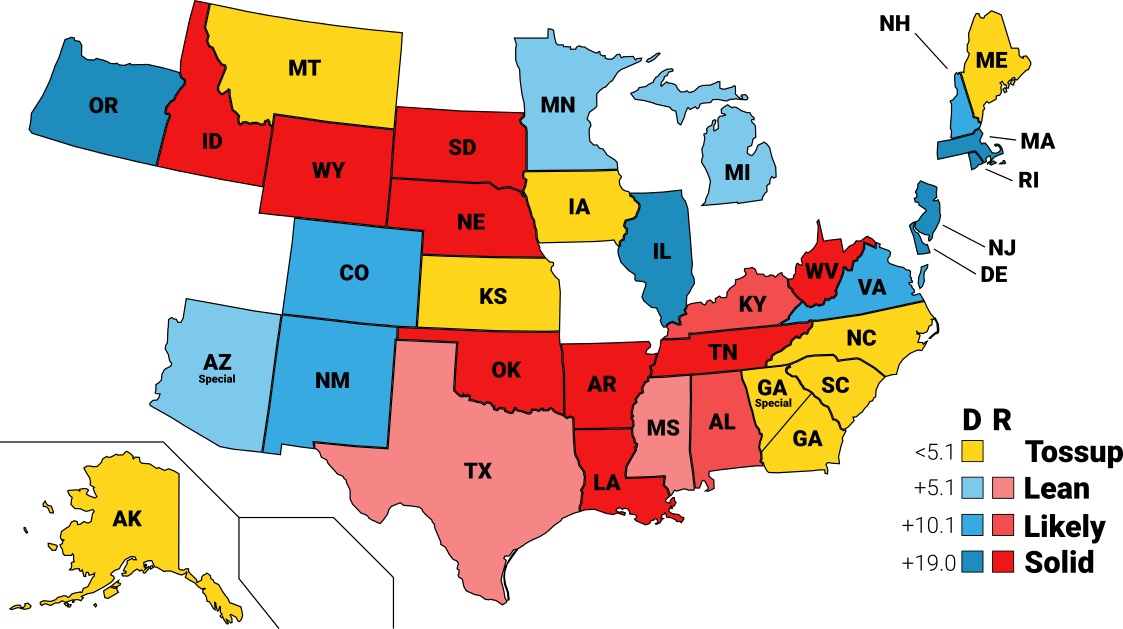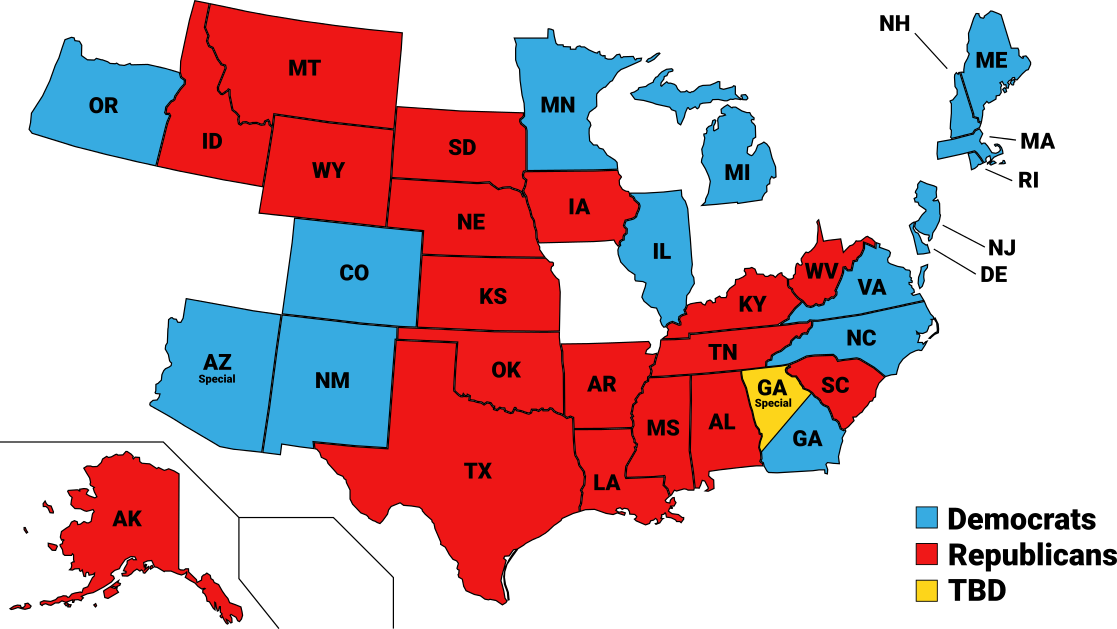D 51 – R 49
51 seats needed to win

Last updated: 10/30
Based on a weighted average of the latest polling, Congress Compass predicts that the Democratic caucus will have 51 seats and the Republicans will have 49 seats in the United States Senate after the 2020 elections. 51 seats, or 50 seats with the Vice President breaking the tie, are needed to control the Senate, and thus the Democratic Party is the slight favorite for overall control.

No Tossup Map
Congress Compass averages the polls with a simple weighting model that looks at sample size, age, and methodology. There are no adjustments nor “unskewing” of the margins, and fundamentals are only used where no polling is available. This model correctly predicted all but two races in the 2018 Senate elections. This made the Congress Compass model for the Senate more accurate than FiveThirtyEight in the same year, which predicted all but three races correctly.
Who’s ahead in each race?
You can view the spreadsheet in higher resolution here. The margin column displays Democratic margins, and thus Republican leads are represented as negative numbers. An asterisk next to a pollster’s name indicates that the poll was commissioned or even produced by a party, a political candidate, or political organization. MoE stands for “margin of error”, which is estimated based on sample size and the pollster’s average historical polling error.
How close are the elections?
Polling suggests that 48 members of the Democratic caucus are either not up for re-election, or favored by more than a standard error, while 43 Republicans are ahead or favored by more than a standard error. 9 seats are within the average margin of error, and are all displayed in yellow on the map.
